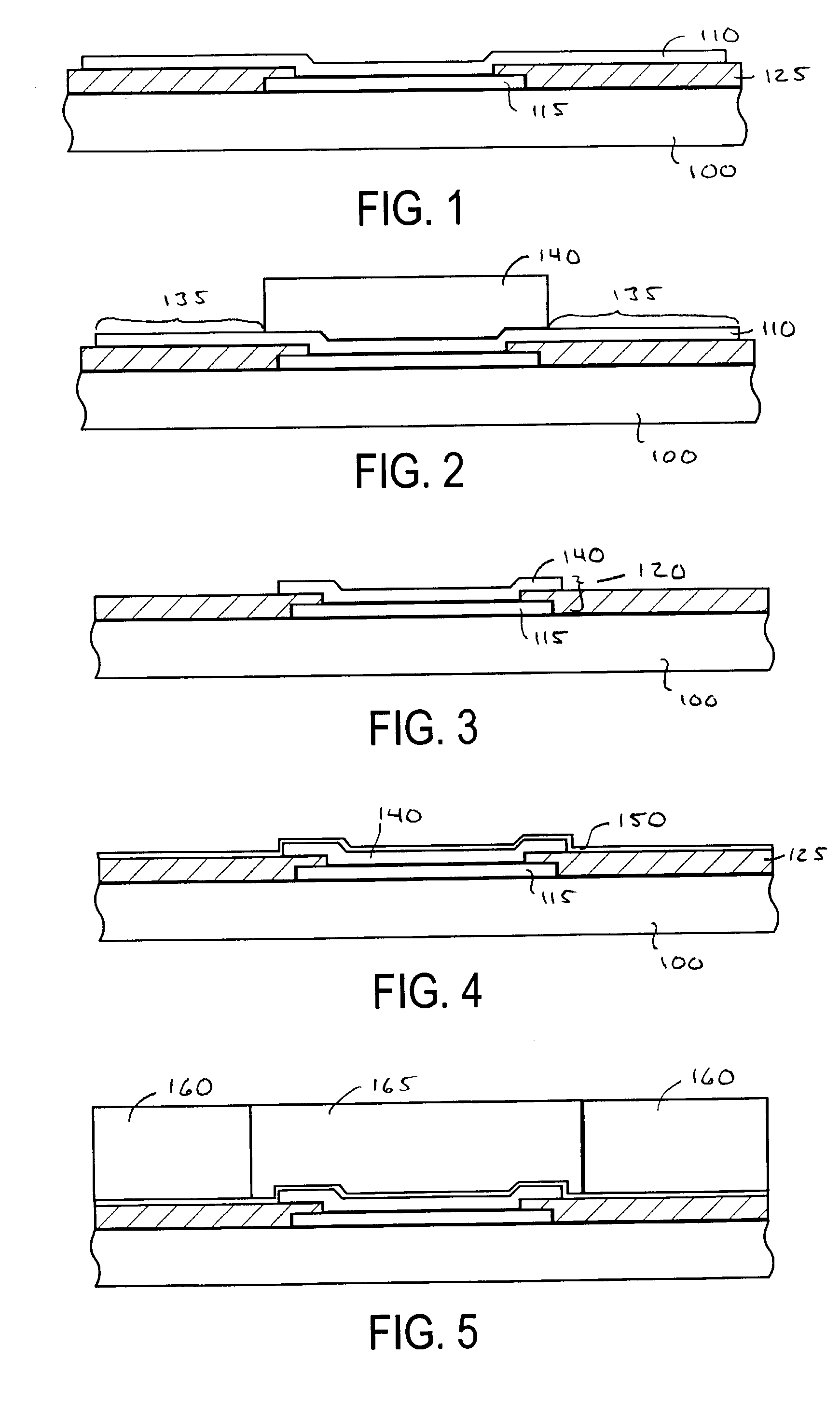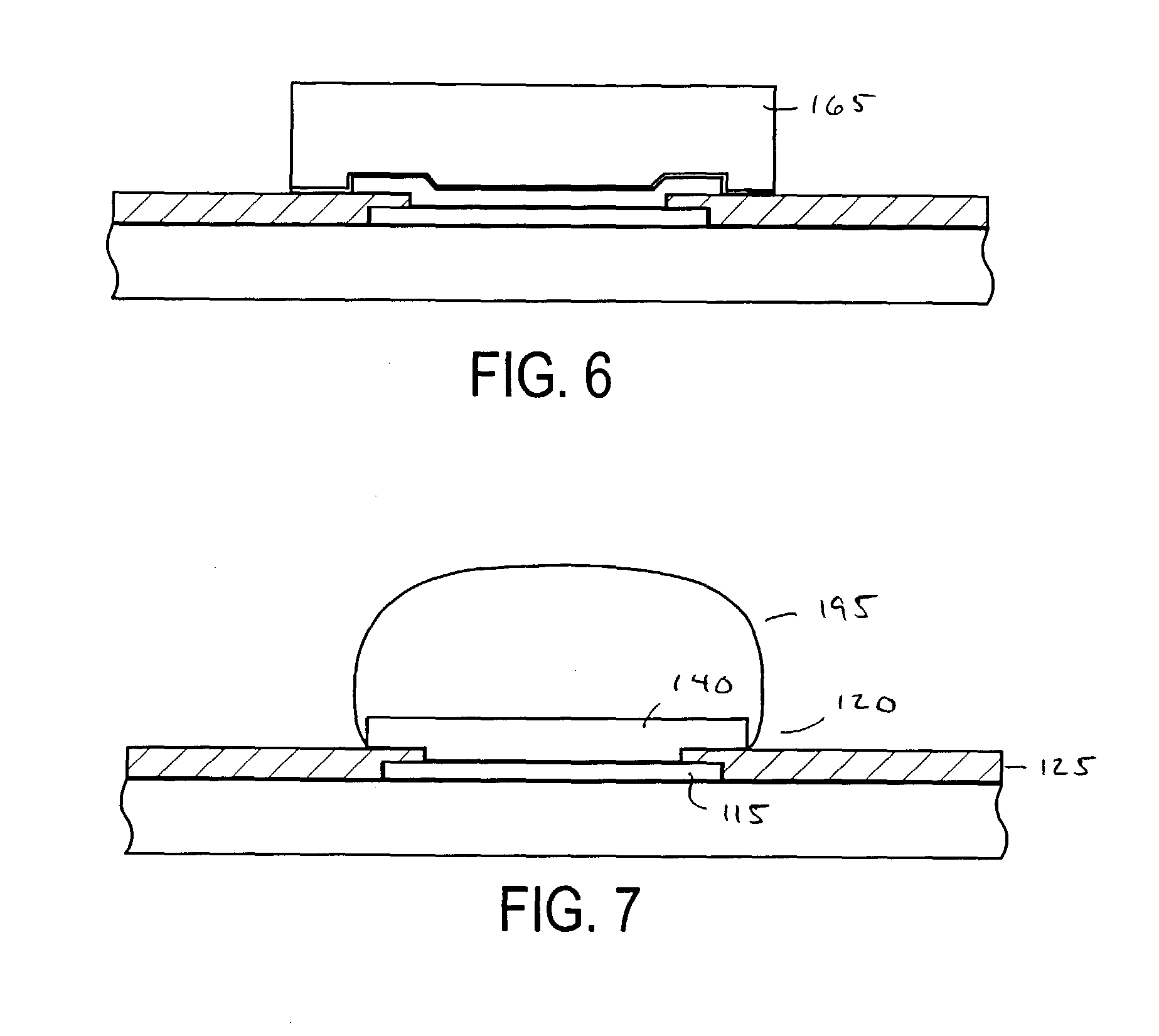Screen print under-bump metalization (UBM) to produce low cost flip chip substrate
a flip chip substrate and metalization technology, applied in the field of integrated circuit fabrication and the formation of interconnect pads, can solve the problems of increasing the number of interconnect pads on the circuit chips, increasing the cost of the process of forming interconnect pads, and increasing the complexity of the integrated circuit industry. , to achieve the effect of reducing the production time of integrated circuits, reducing processing steps, and reducing cos
- Summary
- Abstract
- Description
- Claims
- Application Information
AI Technical Summary
Benefits of technology
Problems solved by technology
Method used
Image
Examples
Embodiment Construction
[0020]Embodiments of the present invention are directed toward methods for forming a conductive layer of an interconnect pad on an integrated circuit using screen printing techniques. Unlike known techniques, such as sputtering techniques, the method of the present invention does not engender the problems of sputtering, such as relatively high cost and lengthy processing times.
[0021]Screen printing techniques have been widely used in the graphic arts fields to produce art work and have found use in the production of printed circuit boards to transfer relatively large scale mask patterns onto printed circuit boards. Screen printing techniques include the use of a stencil to selectively transfer an image onto a substrate. The image is typically transferred by mechanically pressing a given material through porous (e.g., mesh) portions of the stencil onto a substrate while adjacent non-porous portions of the stencil do not permit printing of the material. Screen printed materials of use...
PUM
 Login to View More
Login to View More Abstract
Description
Claims
Application Information
 Login to View More
Login to View More - R&D
- Intellectual Property
- Life Sciences
- Materials
- Tech Scout
- Unparalleled Data Quality
- Higher Quality Content
- 60% Fewer Hallucinations
Browse by: Latest US Patents, China's latest patents, Technical Efficacy Thesaurus, Application Domain, Technology Topic, Popular Technical Reports.
© 2025 PatSnap. All rights reserved.Legal|Privacy policy|Modern Slavery Act Transparency Statement|Sitemap|About US| Contact US: help@patsnap.com



